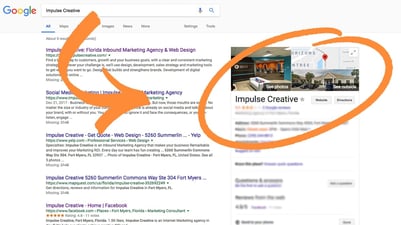Whether you have a physical location or your business lives online, people need to find you when they search for you.
That’s pretty basic local SEO, isn’t it?
How many directories have you submitted your business to? Did you know that’s a thing?
Over the years I’ve been pitched the sales script of listing in “all the directories” again and again. I’m sharing what I’ve found over the years to help calm the FOMO when it comes to listings.
First, what exactly are we talking about when it comes to business listing data? At its core, it's the NAP: the name, address, phone number, and URL of a business' own website.
Why does it matter? Your business name, address, phone number, and website are actually the core of your web equity. That’s what you really need to own and control.
Now, you want to make sure that prospective customers are going to find correct information about you so that they can contact you and do business with you.
When you’re thinking about “all the directories,” tools like SEMRush Listing Management, and Yext help businesses monitor and manage business listings. Search for help with managing directory listings, and you’ll find a slew of tools.
In addition to submitting good data to directories, you’ll want to seek out the bad data and correct it. Make sure you clean up or delete bad data from the internet.
You need to check your position on the SERPs. This NAP consistency is a really critical local search ranking factor. Having mismatched NAP out there on trusted places is a really big negative ranking factor. These tools can help manage all of that.
But before you go crazy hiring a directory listing specialist on your staff, start with the basics. Each time I get pitched by a freelancer or a SaaS, I go back to what works. I ask myself, which sites send the most traffic? Which listings matter? Is it the phone book? Is it Yelp?
 I’ve found over the years that the best place to start is with your Google My Business listing. When you search for a business or brand and you see that handy box on the side, that’s what Google calls a “Knowledge Graph.” It’s a block that’s generated from company details listed on Google’s business platform, Google My Business.
I’ve found over the years that the best place to start is with your Google My Business listing. When you search for a business or brand and you see that handy box on the side, that’s what Google calls a “Knowledge Graph.” It’s a block that’s generated from company details listed on Google’s business platform, Google My Business.
This is the online portal many businesses see as the key to local search. Google My Business gives you tools to showcase your company’s information, engage with customers and gain helpful insights on how users are interacting with your Knowledge Graph.
The best part about it besides how popular it is with user, is that it’s all free!
All you need to do is sign up for an account to start telling the world’s largest search engine about your business. After you’ve logged into the platform, it’s easy to add your site to Google by building your online profile.
Jenn Villa breaks it down in Google Knowledge Graph for Beginners complete with instructions on claiming a business that already has a listing.
You can also log in to your Google account and again enter the phone number for your business and find duplicates or inconsistent data that Google might have out there for you. This top one is that same tool, and you want to make sure that you are entering all of the different phone numbers that you might have for that business to uncover duplicates and inconsistent data at Google Maps.
Then go to Google Maps search and start typing in the name of the business and look in the Google suggest box. A lot of times that will give you other listings that you may not have been aware of that Google has on their maps for the business.
When you begin to branch out and manage more than just Google listings, be patient. Once you’ve made updates, different directories are going to update on different timelines. It takes a lot longer than anyone anticipates.
If you really go after inconsistent data, you can start seeing a difference in your rankings within about a month. You can make a big difference within three months. Give yourself six months to make sure that the data is flowing through the ecosystem, that it's getting crawled and indexed by Google, and seeing what happens. Make sure you give yourself enough time to make this happen properly.
Want help with local search? Download our beginner’s guide to local search and let us know how we can help!
Searching photo by Marten Newhall on Unsplash
